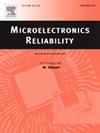Resonant fatigue test performance of battery pack connections using wire bonding
IF 1.6
4区 工程技术
Q3 ENGINEERING, ELECTRICAL & ELECTRONIC
引用次数: 0
Abstract
Reliable interconnections in electric vehicle (EV) battery packs are critical for performance and safety. Wire bonding enables joining dissimilar materials with minimal heat input but suffers from limited joint strength under vibrational stress. Existing testing standards focus on entire battery packs, lacking direct assessment of bonding wire reliability. This study proposes a novel resonance-based fatigue testing method to evaluate the fatigue resistance of aluminum (Al), silver (Ag), and copper (Cu) bonding wires (200 μm in diameter). Results show that Ag and Cu wires significantly outperform Al wire under high-frequency vibration. At 1 mm amplitude, Al wire failed immediately, while Ag and Cu wires survived ∼200,000 and ∼ 300,000 cycles, respectively. In a 10-million-cycle test at 0.6 mm amplitude, Ag and Cu wires exhibited excellent fatigue resistance, whereas Al wire fractured before 60,000 cycles. SEM analysis revealed severe cracking in Al wire after 30,000 cycles, while Ag and Cu wires showed only minor cracks after 10 million cycles. Although Cu wire demonstrated the highest fatigue resistance, its higher bonding temperature is a limitation, making Ag wire a promising alternative. The proposed method offers an effective approach to assessing bonding wire reliability, aiding material selection for enhanced EV battery durability.
采用线键合的电池组连接的谐振疲劳试验性能
电动汽车(EV)电池组的可靠互连对性能和安全性至关重要。金属丝键合能够以最小的热输入连接不同的材料,但在振动应力下,接头强度有限。现有的测试标准侧重于整个电池组,缺乏对键合线可靠性的直接评估。本研究提出了一种新的基于共振的疲劳测试方法来评估铝(Al)、银(Ag)和铜(Cu)键合线(直径200 μm)的抗疲劳性。结果表明,在高频振动下,Ag和Cu丝的性能明显优于Al丝。在1毫米振幅下,Al线立即失效,而Ag和Cu线分别存活了~ 20万和~ 30万次。在0.6 mm振幅下的1000万次循环试验中,Ag和Cu丝表现出优异的抗疲劳性能,而Al丝在6万次循环前断裂。扫描电镜分析表明,铝丝在循环3万次后出现了严重的裂纹,而Ag和Cu丝在循环1000万次后仅出现了轻微的裂纹。虽然铜丝显示出最高的抗疲劳性,但其较高的键合温度是一个限制,使银丝成为一个有希望的替代品。该方法为评估键合线可靠性提供了有效的方法,有助于提高电动汽车电池耐久性的材料选择。
本文章由计算机程序翻译,如有差异,请以英文原文为准。
求助全文
约1分钟内获得全文
求助全文
来源期刊

Microelectronics Reliability
工程技术-工程:电子与电气
CiteScore
3.30
自引率
12.50%
发文量
342
审稿时长
68 days
期刊介绍:
Microelectronics Reliability, is dedicated to disseminating the latest research results and related information on the reliability of microelectronic devices, circuits and systems, from materials, process and manufacturing, to design, testing and operation. The coverage of the journal includes the following topics: measurement, understanding and analysis; evaluation and prediction; modelling and simulation; methodologies and mitigation. Papers which combine reliability with other important areas of microelectronics engineering, such as design, fabrication, integration, testing, and field operation will also be welcome, and practical papers reporting case studies in the field and specific application domains are particularly encouraged.
Most accepted papers will be published as Research Papers, describing significant advances and completed work. Papers reviewing important developing topics of general interest may be accepted for publication as Review Papers. Urgent communications of a more preliminary nature and short reports on completed practical work of current interest may be considered for publication as Research Notes. All contributions are subject to peer review by leading experts in the field.
 求助内容:
求助内容: 应助结果提醒方式:
应助结果提醒方式:


